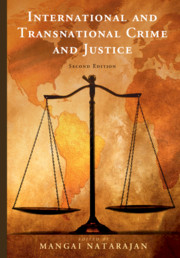Book contents
- International and Transnational Crime and Justice
- International and Transnational Crime and Justice
- Copyright page
- Contents
- Figures and Tables
- Preface
- About the Editor
- Notes on Contributors
- Introduction
- PART I OVERVIEW: TRANSNATIONAL CRIME
- PART II OVERVIEW: INTERNATIONAL CRIME
- PART IIA Core International Crimes (As Defined by the Rome Statute, 1998)
- PART IIB International Crime and Justice for Women and Children
- PART IIC International Justice
- PART III OVERVIEW: INTERNATIONAL AND TRANSNATIONAL CRIME RESEARCH
- World Map
- Index
- References
PART IIA - Core International Crimes (As Defined by the Rome Statute, 1998)
from PART II - OVERVIEW: INTERNATIONAL CRIME
Published online by Cambridge University Press: 20 June 2019
- International and Transnational Crime and Justice
- International and Transnational Crime and Justice
- Copyright page
- Contents
- Figures and Tables
- Preface
- About the Editor
- Notes on Contributors
- Introduction
- PART I OVERVIEW: TRANSNATIONAL CRIME
- PART II OVERVIEW: INTERNATIONAL CRIME
- PART IIA Core International Crimes (As Defined by the Rome Statute, 1998)
- PART IIB International Crime and Justice for Women and Children
- PART IIC International Justice
- PART III OVERVIEW: INTERNATIONAL AND TRANSNATIONAL CRIME RESEARCH
- World Map
- Index
- References
- Type
- Chapter
- Information
- International and Transnational Crime and Justice , pp. 319 - 320Publisher: Cambridge University PressPrint publication year: 2019
References
REFERENCES
FURTHER READING
REFERENCES
FURTHER READING
REFERENCES
REFERENCES
WEBSITES
FURTHER READING
REFERENCES
WEBSITES
Amnesty International. www.amnesty.org/en/.
Human Rights Watch. www.hrw.org.
International State Crime Initiative. http://statecrime.org/about-isci/about-state-crime/.



